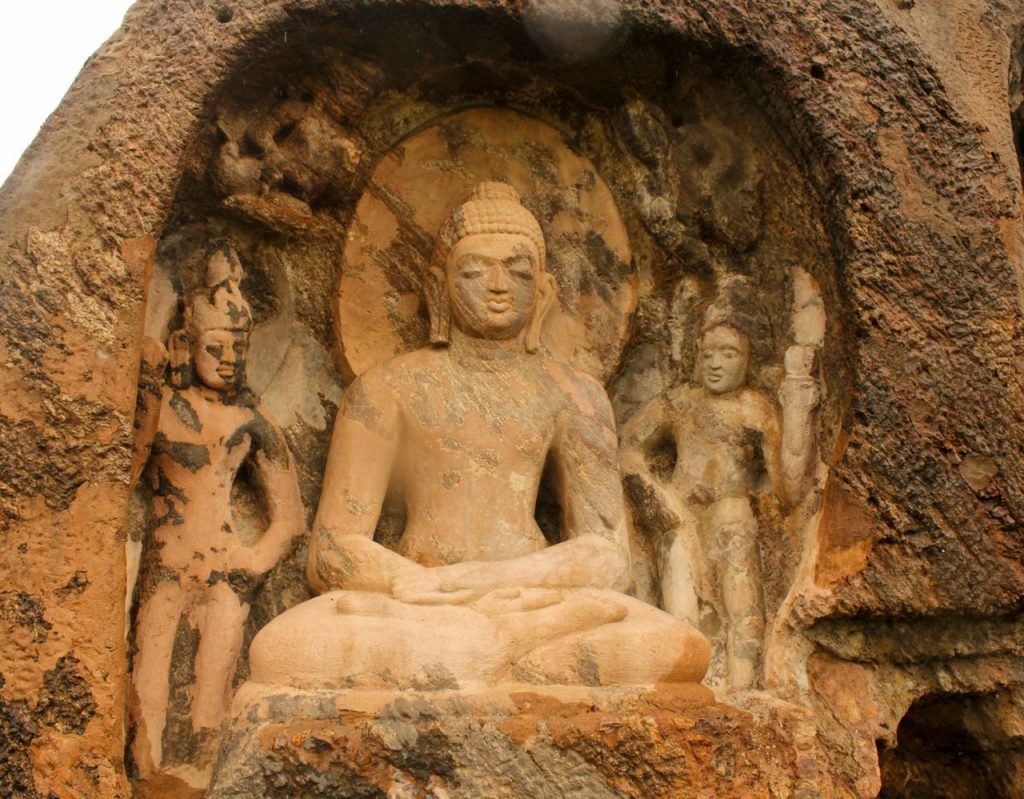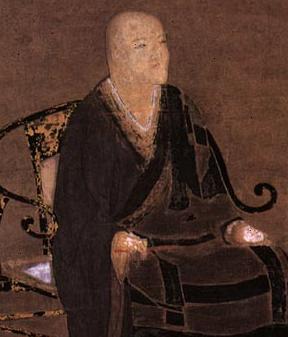“All beings are the wombs of Buddhahood”
Tathagata-garbha as womb or embryo
The word Tathagata means “thus gone” or “thus come.” It was originally used when referring to the historical Buddha. In Mahayana, it refers to Buddhahood itself. Garbha means either “embryo” or “womb.” Harvey notes that “Tibetan translations are based on the first meaning of garbha while Chinese ones are based on the second.” Both words – embryo (or seed), and womb (or matrix) – are concrete metaphors drawing our attention to the assertion that all living beings, “however deluded or defiled they are … can mature into Buddhas” (Harvey). In East Asia, the Sanskrit word was translated as the more neutral Foxing (Fo-hsing), which gave us the English “Buddha-nature.”
Why did Indian Buddhists translate garbha as “embryo”?
Francis H. Cook explains that in Indian Buddhist literature – and that also applies to Tibetan Buddhism still closely associated with the Indian cultural zone – there is a strong emphasis on the fact that the Tathagata-garbha is “merely a seed, the undeveloped source or cause of the fully grown fruit of Buddhahood. It does not exist within ordinary beings in its fully developed state as fruit-result … Consequently, training is necessary to mature the seed-potential.” There was among the Indian Buddhist writers a fear that, had it been more than a potential Buddhahood, it could have been mistaken for just another name for the Hindu Brahman.
In China, where reality was already apprehended as phenomenal, rather than substantial, no such anxiety was present, and the Tathagata-garbha “often came to be seen as a pre-existent reality waiting to be uncovered” (Harvey).

TheTathagata-garbha and Yogacara schools as responses to the Madhyamakas
The Tathagata-garbha Sutra was composed between c. 200 and 250 CE. The Sutra on the Lion’s Roar of Queen Srimala, which is regarded as the most important text for the Tathagata-garbha school, was composed between 250 and 350 CE. According to A. W. Barber, a contributor to Buddhism in the Krishna River Valley of Andhra, “the most likely locale for the development of the tathagatagarbha articulated in the Srimala was Andhra.” The Mahasamghika sects had a strong presence in the Andhra region, in southern India, and Barber refers to a research paper by Alex Wayman which “delineated eleven points wherein the philosophical tenets of the Mahasamghika and the doctrines of the Srimala text are in complete agreement.” In particular, mention of a “root consciousness” (mula-vijnana) was already found in the Mahasamghika texts.
Andhra, and in particular Amaravati, in the Krishna River Valley, is also known to have been the region where the first Prajnaparamita Sutra had been put in writing around 100 BCE, where Nagarjuna (150-250 CE) had lived and written, and also where some of the other Madhyamaka writers, in particular Candrakirti (600-650) would later live and write. On the other hand, Asanga and Vasubandhu, who founded the Yogacara school, were born and lived in Gandhara in the 4th century. Though geographically apart from each other, the Yogacara school in Gandhara, and the Tathagata-garbha school in Andhra appear to have developed in dialogue with each other, to further strengthen the Madhyamakas’ doctrine of sunyata (emptiness). In both cases, the concept of a deeper luminous layer of consciousness was called upon to provide a better ground for emptiness, as Nagarjuna’s equation of emptiness with dependent origination had left “phenomena supported by nothing but other unsupported phenomena” (Harvey).

“The concept of a seed potential or of a womb-like container in which Buddhahood grows is … often encountered in Vijnanavadin [Yogacara] texts, such as the Lankavatara Sutra, Samdhinirmocana Sutra, and the Mahayanasamgraha is often assimilated to the concept of the alaya-vijnana.”It is in fact explicitly said in the Lankavatara Sutra that“the alaya-vijnana is also known as the Tathagata-garbha”(Harvey). In the Yogacara’s elaborate doctrine of consciousness, an 8th layer of consciousness had been added to the original system of seven “active” consciousnesses found in the Abhidharma. This 8th deeper layer of consciousness was called alaya-consciousness, that is, the storehouse- or “receptacle-consciousness” was regarded as storing karmic “seeds,” good and bad, “not only the seeds of defilement and ignorance, but the seeds of purification and wisdom as well” (Cook). The process is not unlike that of genetic material passed on at birth, which the West sees as a “code,” rather than a substance. In the case of the karmic seeds, however, the view is that of a dynamic flow of life energy, and the image of the seeds represents a potential for growth, activity, movement, change, life.
The difference between the two schools is best viewed as a matter of emphasis. Yogacara focused on the “mechanics” of consciousness, showing how the alaya projects karmically defiled images into the “things” we see in such a way that they appear to exist outside us, independent of us. It is what is referred to as “the construction of the unreal.” The Tathagata-garbha writers, on the other hand, emphasised the original purity of the mind, the “brightly shining citta,”a concept also found in the Yogacara, the Madhyamaka and the Prajnaparamita literature, but which is given a more prominent position in the Tathagata-garbha teachings.
The “brightly shining citta”
In the Prajnaparamita sutras, the “brightly shining citta” appears as the bodhi-citta – the “thought of awakening” – described as the heartfelt aspiration to embark on the Bodhisattva path. In his study of the Diamond Sutra, Red Pine calls it the thought that puts an end to all thoughts. Harvey says that it is a no-thought. We could probably say that it is an in-sight, rather than a dualistically constructed concept. In the Tathagata-garbha literature, it is the moment “when a person becomes aware of the Tathagata-garbha within” (Harvey).
Like the purified alaya-consciousness in Yogacara, the Tathagata-garbha is “beyond duality, having the nature of thought and intrinsic purity of a jewel, space or water. It is brightly shining with lucid clarity … it is the Tathagata-garbha which responds to spiritual teachings and aspires for Nirvana.” It is not unlike what other spiritualities refer to as the divine within.
Soteriological Tathagata-garbha versus epistemological Madhyamaka

While recognising that the Yogacara and Tathagata-garbha schools are very close, Cook draws our attention to the fact that “some texts, such as the Srimaladevi Sutra, equate Tathagata-garbha with sunyata. The Madhyamaka treatises do not make this correlation … but some other Sunyavada texts … occasionally discuss the garbha.” In Cook’s view, “if the term sunyata is used, the emphasis is on the epistemological and perhaps ontological; if Tathagata-garbha is used, the stress is on the soteriologial and “practical.” Likewise the Yogacara investigation, though intricate and sophisticated, was primarily based on elaborating a practice strongly centered on the mind, in other words, a meditation practice, which was to later give rise to the Ch’an and Zen schools in East Asia. What the Tathagata-garbha school brought forcefully to the fore is the notion that there is in all of us the potential to attain awakening. It is a luminous element which is often obscured by defilements, but these are only“adventitious,” and can be removed through meditative practice. Just knowing that we have within us this Buddha-nature is incredibly empowering and liberating.
Words as skilful means
Even more than the Yogacaras, the Tathagata-garbha writers have drawn criticism for a possible drift into substantialism. But Harvey’s remark about the Yogacara’s theories of consciousness being “skillful means,” also applies to writings on the Tathagata-garbha. Such skillful means are devices “to be used in conjunction with a series of meditations in leading the practitioner beyond all mental constructions … to a direct experience of the true nature of reality.” Buddhist practitioners should never forget that, whenever a new “doctrine” is proposed, it must only be used as a map to support our practice. If, when travelling, we wish to get to a particular location and find that the map shows no road to go there, it does not help to just draw an extra road on the map! Likewise, conceptual thinking cannot by itself allow us to achieve awakening. Awakening must be real-ised – made real, or one could say “embodied” – through an actual transformation of our consciousness, a dropping of the ego-centred view into the more intuitive and compassionate embrace of no-self.
Buddha-nature in China and Japan

Though the concept of Buddha-nature originated in India, it is in East Asia that it became most influential. In fact the Tathagata-garbha Sutra is no longer extant in Sanskrit and only accessible in its Tibetan and Chinese translations. It is in large part through the Lankatavara Sutra that the notion of Buddha-nature, already blended with Yogacara elements, entered China. In the Awakening of Faith in the Mahayana, the Buddha-nature is seen “as a universal ‘One Mind’, an Absolute that is the basis of the whole universe, thus giving it a cosmological role” (Williams).
As it penetrated into East Asia, Buddhism underwent a profound renewal process which amounted to a rebirth. Unlike India, China had not been exposed to the essentialist propensities of the Indo-Europeans, and it is true that Chinese Buddhist practitioners did not take readily to the sutras. But China had retained aspects of an older pre-Bronze Age apprehension of reality as the concrete experience of ever-changing phenomena, rather than the manifestation of a transcendent order. Daoism provided Buddhism with a new input of the pre-Vedic culture that had inspired the Buddha’s quest when he had left home to embark on his quest. Daoism – and to some extent, Confucianism as well – allowed Buddhism not only to flourish, but also to mature in a way it could not have done in India, especially after the arrival of Islam. In Daoism, reality was already understood as the activity of the Dao, which was at once a source, metaphorically represented as a womb – a dynamic emptiness out of which life arose – and a Way, or rather, what Heidegger would call, a “waying,” a dynamic flow of life through the world. With this view came an honouring of the sacred naturalness of “the thousand things,” which chimed well with the concept of being born endowed with a luminous deeper nature.

As the concept of Buddha-nature was imported into Japan by Dogen (1200-1253), founder of Soto Zen, it was not just sentient beings that were endowed with a Buddha-nature. Dogen is said to have deliberately mistranslated the sentence “all beings have the Buddha-nature” as “all beings are the Buddha-nature.” All beings here include what had been regarded by earlier Buddhism as inanimate objects. “The whole changing flux of empty phenomena was nothing but the Buddha-nature within which it was not possible to designate anything as “non-sentient” (Harvey). For the first time, emptiness really became a positive, or rather, it was a negative that generated a positive. Being “nothing” was now clearly lived as being “everything.”
Sources
Peter Harvey – An Introduction to Buddhism: Teachings, History and Practice (2013)
Francis H. Cook – Hua-yen Buddhism – The Jewel Net of Indra (1977)
Sree Padma & A. W. Barber (Editors) – Buddhism in the Khrisna River Valley of Andhra (2008)
Paul Williams – Mahayana Buddhism: The Doctrinal Foundations 2nd edition (2009)
Anyone interested in a reformulation of Buddhist thought in the language of Western philosophy may have a look at my other blog, dedicated to Nishida Kitaro, Nishitani Keiji and Ueda Shizuteru:
https://thekyotoschoolofphilosophy.wordpress.com
